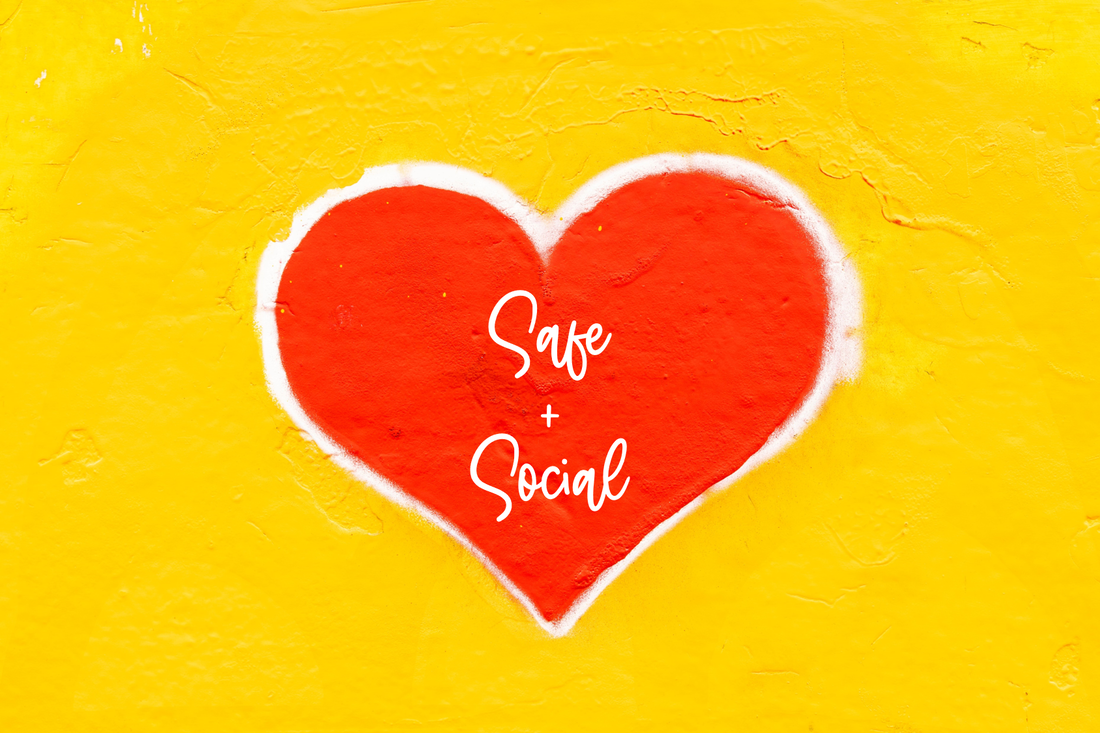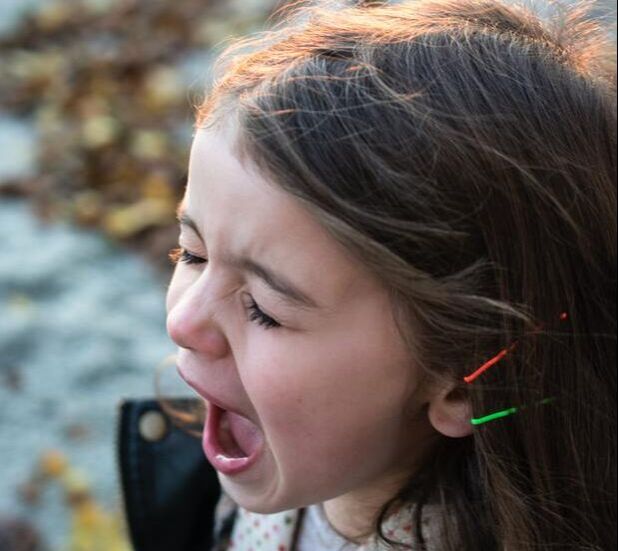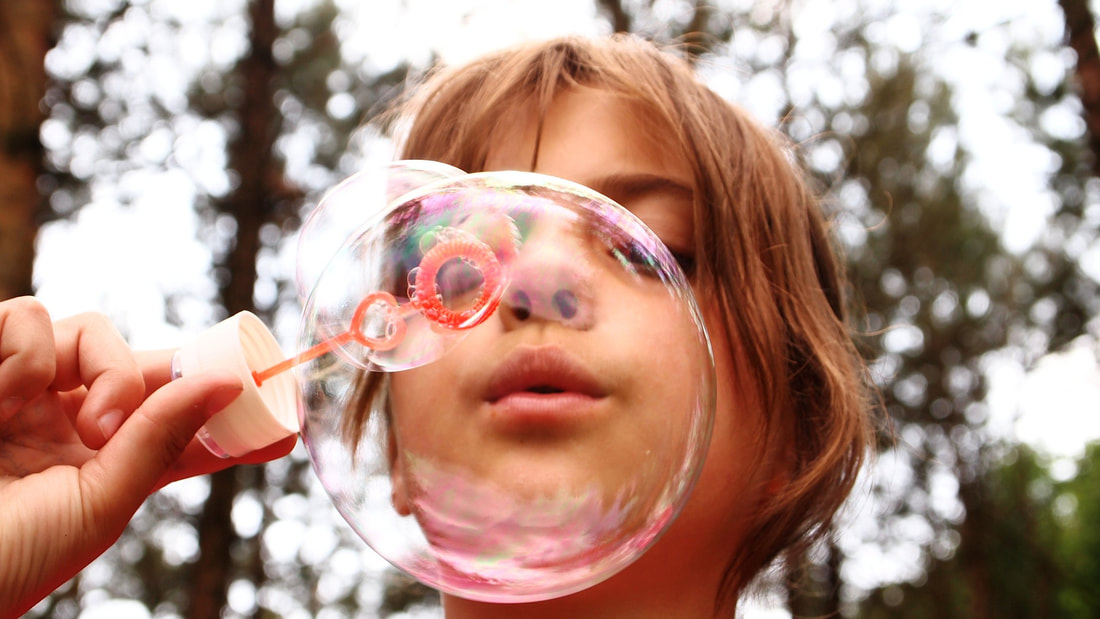|
Your Play Therapy theory guides you on the “what” to do in the Playroom - what you should say or not say. What toys are present or absent. Who makes the decisions about what happens in the Playroom. If and when parents come to play.
AND beyond what we do in the Playroom how we show up in the Playroom is equally important if not more important. What I am talking about is about creating a neuroception of safety in the Playroom. Neuroception is the process of neural circuits determining if a certain situation is safe, dangerous, or a life threat. If a child perceives us or our Playroom as dangerous or a life threat all that theory and technique goes out the window. In this blog HERE I talk about creating a neuroception of safety via Tele-Play and dive a little bit deeper into neuroception and co-regulation. Well...what about when we are in the office? Some of the ways of creating a neuroception of safety over virtual platforms are pretty similar, BUT we do have a different nervous system experience when we are sharing the same physical space. Before we dive into cues of safety let’s get clear on what our nervous system nerurocepts as dangerous. Lisa Dion identifies four threats to the nervous system in her book Aggression in Play Therapy. They are:
Okay - now that we know what the body perceives as dangerous or threatening here are my top tips of how to create a neuroception of safety in your Playroom! Create Structure and Consistency “Trauma is chaos – structure is healing” is one of my most loved phrases from my Trauma Focused Cognitive Behavioral Play Therapy training. Because it is SO TRUE. I talk about this concept extensively with parents when working on how they can support their child at home. BUT this is really true when it comes to our Playroom too. We need to create structure for our session so young people know exactly what to expect each time they see is. In her book, Lisa Dion also refers to “the unknown” as one of the four threats of the nervous system. With creating structure we are making the unknown known. When it comes to the Playroom this means giving consistency and structure down to the little details of how you start your sessions - parent check in, right into the play, or checking in in some other way. It also includes starting and ending at a consistent time. In Child Centered Play Therapy this also comes with the entry to the Playroom statement and the warning for session closure. The biggest victory? When the child can repeat verbatim your entry to the Playroom statement or comment on how it is the same every time. Predictability creates safety. It also means sticking to the structure you have set up. If you are structuring a Child Centered Play Therapy session it doesn’t mean half way in asking questions and transitioning into a talk therapy session or a directive Play Therapy session. Also - how do you say goodbye? Is it the same every time? Some therapists even get so predictable they wear the same exact thing every day. Although I can’t manage that I do have a work “uniform” that consists mostly of leggings, a dress, and a sweater (hey - a girl has to be comfortable right?). Send Social Cues of Safety and Co-Regulation This Co-Regulation Quick Guide from Justin Sunseri is fantastic! He talks a lot about “safe and social cues” as the foundation for creating a neuroception of safety. When you are in the Playroom I think the most important safe and social cues you can give are:
Regulate Yourself If we are not present and we are out of our window of tolerance our clients will feel our nervous system energy and also become dysregulated. It sends them a cue of danger that something in the environment may be dangerous or off - even if it is just you preoccupied with an unanswered email, a phone call you just made, or a stack of notes. So figuring out what you need in between sessions and during sessions to regulate your nervous system so you can be the best version of your therapist self. Lisa Dion is fantastic at emphasizing the importance of connecting to and feeling your body as well as discharging nervous system energy through body movement during sessions. This might mean swaying and moving during your time with the child. And outside of session? Regulating yourself might mean eating something crunching between sessions, stretching and going for a quick walk around the office, or deep breathing and meditation exercises. Maybe what you need is co-regulation and to pop over to the office next door to connect. The great news is there is a gigantic buffet of regulation skills options out there – find what works for you! Be Congruent And what if we can’t be regulated? Well, then it is essential to be congruent! Congruence is the ability to be real, open, authentic and integrated during sessions. This is also what Carl Rogers would refer to as genuine – a core condition of therapy! The opposite of congruence? Incongruence- another cue of danger! Lisa Dion has an excellent blog post HERE about the importance of congruence as a Play Therapist. Essentially the importance of authentically being yourself and showing up as you are because when we are “faking it” - kids know. They can sense something isn’t right even if they aren’t able to quite put their finger on it. Sometimes they make assumptions it is them, their play, or they can be led to feel rejection. All of these? Well they are working against your therapeutic goals. So overall it is best for us to show up as we are and be authentic as ourselves. Want to go deeper? Check out this article by Dee Ray, Kimberly Jane, and Hayley Stulmaker from the International Journal of Play Therapy! Be Mindful of The State of The Playroom Okay, we have all had those sessions. The sessions where our shelves get wiped out and nearly every toy ends up in a pile on the floor. Creating safety for our clients also involves making sure everything gets put back in a consistent spot and the Playroom looks pretty much the same every time they enter. They know where to find the dolls, the trucks, oh...and the handcuffs! Things should also be placed in a neat order so the nervous system isn’t overloaded. More things to scan and clutter means the amygdala is working harder to scan for safety and danger. This also means having a good hard look at your desk. If you have a hybrid office where your desk is also a part of your Playroom or play space making sure there are not 1,000 post-it notes all over, stacks of paperwork, or 50 coffee cups. Lastly there are certain colors (like red) that can be activating to our nervous systems and other colors that can soothe. Pictures or art that is activating can put us into a heightened state of arousal. Pictures of nature or water or elements of nature like plants, flowers, or a fish tank can all create a neuroception of safety. And that’s a wrap! What are your tips for creating a safe Playroom? Pop them in the comments below! Looking for more resources for regulation? Check out my training on Keep Calm and Regulate On: Play Therapy and the Neuroscience of Emotional Regulation!
0 Comments
Deep breathing is definitely one of the quickest and most efficient and effective ways to regulate your nervous system. If you want to learn more about some fun ways to incorporate deep breathing into your Play Therapy sessions check out this blog HERE!
BUT for some young people deep breathing isn’t their jam… and that’s ok! I wanted to offer some alternatives to deep breathing for emotional regulation for young people you work with! Movement When we become dysregulated and our sympathetic nervous system begins to take over we produce stress hormones including the fast acting adrenaline and longer acting cortisol. These hormones can lead to anxious or depressed mood, stress, and fatigue. Exercise or moving your body can be a regulation superpower. First, it helps reduce the stress hormones levels in your body and it also produces endorphins which are our natural painkillers and also boost mood. Soo...does this mean that we should tell kids to do push ups when they are anxious or angry? Well...maybe? I mean if they like pushups sure! Really it is any way they want to move their bodies - a bike ride, jumping on the trampoline, a dance party...all of those are good options! You can get some movement in during the session OR you can help brainstorm ways to create intentional periods of movement at home. Progressive Muscle Relaxation Progressive muscle relaxation is a technique where you progressively tense and relax the muscle groups in your body paired with controlled deep breaths in and out. One of my favorite Progressive muscle relaxation is done by pretending you are doing silly things as you tense and release your muscle groups. I learned a version of this script HERE in a Yoga Calm training and kids LOVE it! You can squeeze your hands like squeezing lemons, stretch your arms out like you are a cat, and pull your head and shoulders in like you are a turtle. I also love to “shake it out” with a whole body shake in between each animal! Another favorite of mine is this Melt Away relaxation script. Here you imagine the sun shining down on each muscle group and imagine all the tension melting away. They give ideas of what your tension is melting away like as snow or butter...however with all the muscle groups it can get a bit repetitive. I also like to have the tension melt away like ice cream, a snow cone, or ice. Calming Affirmations As a Cognitive Behavioral Play Therapist I truly believe that the messages that young people say to themselves hold such power over the way they feel and what they choose to do next. Sometimes kids get really good at shifting the messages they are giving themselves, but other young people….need help! Check out this FREE download of 15 printable affirmations for self regulation HERE! Some of my favorites? I am safe, I have choices, and I am loved. Repeating these affirmations with breaths can create a felt sense of safety and significantly helps with regulation! Mindfulness Mindfulness is the intentional practice of bringing attention and awareness fully to the present moment without judgement. This allows us to break away from self-judgement that often leads to dysregulation. This video HERE has a great explanation of mindfulness and it is kind of funny too. Full disclaimer - this is probably not a great video for younger children. It..well...it uses the word pissed. I know it’s pretty edgy. BUT it does have a unicorn and rainbow scene so that makes up for it right? Maybe just for you, or for some of your teens. OK if you are looking for a video for younger children check out this video HERE! OR anything by Cosmic Kids Zen Den! Some of my favorite mindfulness decks for kids are the Monkey Mind Meditation Deck and the Mindful Kids cards. Looking for a freebie? Check out the 20 Mindful Moments Cards from Sanford Health. Now it’s your turn! Comment below with your favorite non-breathing techniques for regulation! Looking for more resources for regulation? Check out my training on Keep Calm and Regulate On: Play Therapy and the Neuroscience of Emotional Regulation! Nearly all young people who come into our offices have one thing in common - difficulties with emotional dysregulation.
Some (and I would argue nearly all - but that is a topic for a different day) come in with traumatic experiences (of all sizes) that have shaped their nervous system to be more easily triggered by certain things, situations, or stimuli. They have an oversensitive amygdala that, although it has good intentions, is often hypervigilant for cues of danger. This leads to difficulty with regulating big feelings like sadness, anger, stress, or anxiety. And then some of the young people we work with go in the complete opposition direction. They are restrictive, where they spend a lot of time repressing and pushing emotions down. These are the kids where we spend our time getting them to “feel the feelings”. But all of them, with your support, need to find their “just right” of regulation. Like in Goldilocks and the Three Bears - not too much, not too little, just right! So with this comes the first truth about emotional regulation - It’s ALL about regulation! In your work in supporting young people on their journey of “just right” I wanted to share these other three truths you might not know about emotional regulation. Regulation Doesn’t Equal Calm Now, calm might be the ideal! We feel at our best when we have what I call “comfortable feelings”. However, we can be regulated within our sadness, our anxiety, and our anger. Connected to ourselves with our prefrontal cortex in charge. BUT don’t take my word for it - listen to Lisa Dion as she talks about it HERE! One of the first times I heard her talk about this, some major things clicked for me. The truth that feeling and experiencing our feelings is so important, and while it is most comfortable to be calm, the real goal becomes regulated enough to have control and widen the gap between feeling and action. Not All Regulation Breathing is the Same Deep breathing is undoubtedly one of the quickest ways to engage the vagal break, slow the heart rate, bring us back into connection with self and help re-engage the prefrontal cortex. However, did you know that some breathing is meant to slow the heart rate and some is meant to increase heart rate? And BOTH are for regulation? Okay - so the deep breathing we usually teach our clients usually has a longer exhale than inhale. When I teach deep breathing I usually teach 4 counts in, hold for 4, and out for 8. This type of breathing slows the heart rate and brings us from hyperaroused (fight/flight) back to regulated. However if someone is hypoaroused (collapse/shut down) you actually want to flip it and breathe in for twice as long as you breathe out! So this might look like breathing in for 8 and out for 4. With this your heart rate increases, bringing you out of a depressed/shut down state and back to regulated! Self Regulation is Internalized Co-Regulation Allan Shore’s work (you can read some of it HERE) goes really deep into the neuroscience of attachment. What’s fascinating is that the attachment transactions between mother and baby are actually imprinted in implicit procedural memory creating enduring internal working models for coping strategies and affect regulation. SO this means that the way that we self-regulate is actually an internalized model of how our attachment figure co-regulated with us. This highlights the importance of working on strengthening the attachment relationship! Robyn Gobbel actually goes as far to say that self regulation doesn’t exist! See what she has to say HERE! So there you have it! Four truths about emotional regulation that hopefully will help you think a little more critically or have a bit of a different lens when you are doing the hard work of helping the nervous systems of the young people you work with regulate more effectively. What about you? Share your truths about regulation below! Looking for more resources for regulation? Check out my training on Keep Calm and Regulate On: Play Therapy and the Neuroscience of Emotional Regulation! One of the most widely taught (and most effective) regulation skills taught? Deep breathing! Woo hooo! Exciting right?
Maybe I am the only one, but when I introduce the power of deep breathing to the young people I work with I am almost always met with an, um... underwhelming response. Some say “I am always breathing aren’t I? Why do I have to learn to deep breathe?” Others say “If breathing helped I wouldn’t get dysregulated in the first place right?” Okay maybe they use words like upset/ticked off or something else when talking about it - but you get the idea! OR we have the young people who come into our office who have heard it all before. They have tried “the deep breathing thing” and it hasn’t worked. When we ask them to demonstrate they miiiight take a shallow exhale where they fill up their chest and suck in their tummies. Yup, that breathing definitely will not work. Okay, so here is where we as Play Therapists roll up our sleeves and combine the powers of deep breathing with the powers of play and get to work! First and foremost I always feel like some quality neuroscience explaining how when we breathe deeply it calms our heart signaling to our body we aren’t in danger is key for buy in. I fully believe once young people understand WHY deep breathing is so effective (based in science) they are definitely more on board to practice and try. Next it’s time to teach the HOW of deep breathing. Making sure that young people understand that their tummy should fill up on the inhale and get smaller on the exhale, with the top of their chest moving very little. Sometimes we can help young people do this by putting one hand on their chest and one on their tummy. As you breathe together help them notice which hand is moving in and out and make changes as necessary. You can also have them give something a “tummy ride” or an “elevator ride” where the young person lays on their back and places on object on their tummy and watches it go up and down with breath! Next, it’s time to make it fun! For one thing, young people learn better when they are having fun. Want to dive deeper into the neuroscience? Check out this article HERE! Okay - now on to some fun and engaging activities to learn deep breathing! Breathing With Bubbles There are so many playful activities you can do with bubbles! One of my favorite things to do with them is practice those slow long deep breaths. You can get little mini-sized bottles of bubbles on Amazon or the party favor aisle of Target. Some of my best tips for bubble blowing is to make sure you practice some inhales and slow and long exhales before starting the bubble blowing process. I always coach young people to fully exhale (even if they are out of bubbles) before blowing another round. Sometimes for these teaching moments it can be good to invest in a little more expensive bubble where the bubbles keep coming after the first blow! Other props that can help with deep breathing? Feathers and pinwheels! Breathing and Smelling Visualizations Cooking breathing is a technique by Liana Lowenstein will make anyone hungry! In short you call up in your imagination a warm cookie fresh out of the oven. You can have the child pick which cookie flavor they want to breathe with for the day. First with your nose you smell all the cookie goodness (mine is chocolate chip!) and then blow out to cool the cookie down. I like to put my hand out in front of me like I am holding the cookie flat to get more into it! Liana has the complete version HERE as well as a really fun game where you get to eat actual cookies! YUM! Some other spins on this technique:
Breathing Like Animals This video from Sanford Health takes you through how to breathe like a bunny, bumble bee, bear, lion, and crocodile! AND another tip to help with deep breathing - practice, practice, practice! I love when I can send parents a link so they have an easy way to practice at home! You can pretty much use animals (and magical beings) for inspiration for many kinds of breath! Breathe in and blow out fire like a dragon! Breathe in and roar out like a lion! Breathing With Movement Sometimes it can be difficult for young people to pace how long they should breathe in and how long they should breathe out. For this reason getting really visual is important. Sometimes we can start with our hands at our sides (palms out) and raise them up over our heads on the inhale and lower them back down on the exhale. Another way to get movement in with breath is a Hoberman Sphere. On the inhale expand the ball and make it large and on the exhale shrinking it back down! Tracing Breathing With this technique you can imagine or physically trace with your finger shapes while you pace your breathing. Coping Skills for Kids has a free download HERE for four of my favorite types of tracing breathing:
Want to check out more ways to regulate? Check out these resources HERE and HERE! What are your favorite ways to deep breathe with young people? Comment below! Looking for more resources for regulation? Check out my training on Keep Calm and Regulate On: Play Therapy and the Neuroscience of Emotional Regulation! |
Hi, there!I'm Ann Meehan, an LPCC, Loading... Archives
July 2024
Categories
All
|
Privacy Policies | Terms of Use | Disclaimer
Contact
[email protected] | Copyright Meehan Mental Health Services 2022
Contact
[email protected] | Copyright Meehan Mental Health Services 2022








